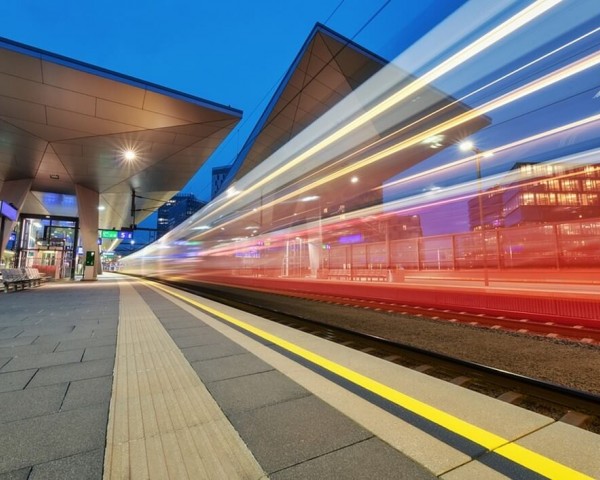The European Commission recently announced its intention to enhance the rail offer on its territory and build a European Railway Network. The EC announced its support for 10 pilot projects aimed at setting up new cross-border rail services or improving the existing ones.
These 10 projects are a first step to gain valuable experience; many more will follow.
The aim is to facilitate contacts between companies and institutions, and to provide assistance in finding one’s way through existing or future aid.
It’s expected that the rail market will be able quickly to provide a better offer, especially for long cross-border travel. That is why the European Commission now wants to help rail companies create new international connections, both day and night, by removing the many obstacles to cross-border rail transport.
Getting Past the Brexit
These connections mainly link the major political and economic capitals such as Amsterdam, Barcelona, Berlin, Budapest, Copenhagen, Milan, Munich, Prague, Paris, Rome, and Stockholm.
But the EC is also interested in a route that could be very promising, both in terms of leisure tourism and especially business tourism: the Amsterdam/London link.
It would make stops in Brussels and Lille, omitting Strasbourg and Paris, which could have been an interesting loop to facilitate the round trips of the elected officials and numerous officials of the European Union and the institutions, NGOs – and lobbyists who regularly travel there.
However, the interest of this line is particular since it brings the post-Brexit Britain a little closer. London is not the only European destination outside the EU that the Commission is interested in, as it is also supporting a project linking Zurich in Switzerland with Munich in Germany.
Moreover, Germany and Denmark will soon be connected by an 18-kilometer-long underwater tunnel. The Fehmarnbelt will become the longest road and rail tunnel in the world when it is completed in 2029. The €10 billion project will link Rødbyhavn on the Danish island of Lolland and Puttgarden in northern Germany and will feature two dual-lane highways and two electrified lanes.
A Boost for Night Trains
The imminent arrival of the night train has been talked about for many years. Since rail travel is one of the most eco-friendly modes of transports it grows in popularity. According to a recent study by Trainline in 2022, 30% of French people have chosen the train once or twice over a car trip and night trips increased by 149% compared to the previous year.
Now, the European Commission has decided to take on the task. There are several night trains among the 10 supported projects of the future European Railway Network:
Paris – Venice:
It is the great return of the historic line Paris / Venice. It is carried by the French company Midnight Trains, with an intermediate stop in Milan.
The idea is to restore the lustre to a night journey that is close to a hotel accommodation offer, since the company presents its offer as “a hotel on rails” to “re-enchant the night train”.
Amsterdam – Barcelona:
Will it soon be possible to cross Europe from northwest to southeast? This is the project of the Dutch-Bergo-Dutch company European Sleeper.
In May, it will launch a night train service between Brussels and Berlin via Amsterdam.
The most attractive offer to come is the one linking Amsterdam to Barcelona, with two stops in Antwerp and Brussels, before crossing France in one go.
Berlin – Stockholm:
A final night link supported by the European Commission will connect Germany, Denmark and Sweden. A long-awaited route, which has the merit of linking the Scandinavian countries and Central Europe in a stronger way.
It will be available from summer 2023 and will pass through Berlin, Hamburg, Copenhagen, Malmö and Stockholm.
Germany – The Center of Europe
This last link is a symbol that places Germany as a hub for European rail services.
Geographically and politically at the center of Europe, Germany will be the starting point for several of the projects supported by the EC, making it a strategic country for rail.
To the north, Berlin will host the Berlin/Copenhagen/Stockholm night line and will bring the Scandinavian countries closer together via the same daytime line, and a future project to Oslo via Copenhagen and Gothenburg.
To the east, Berlin will also be the starting point for routes to Leipzig and Prague, with a project linking it to Munich and thus bringing the German capital closer to Rome.
Munich is not to be outdone: the city will be the gateway to Italy, since it will serve Rome and Milan.
In addition to Zurich in the west, the economic capital will also bring Eastern Europe closer, by going as far as Romania, via Vienna and Budapest where two lines will share the country: one to Oradea and the other to Arad.
Southwest Europe and the Mediterranean will also be supported, with projects focused on the Iberian Peninsula.
In addition to the night train Amsterdam / Barcelona, Europe has decided to support a line Montpellier / Barcelona and two lines from Lisbon, one to Madrid and the other to Coruña.
Complete List of the 10 Supported Railway Projects:
- Hungarian Ministry of Transport, new services connecting Hungary, Austria and western Romania;
- Germany – Denmark – Sweden connection, with the participation of SJ (new night train service Stockholm – Copenhagen – Berlin and day train Hamburg – Gothenburg (and potentially Oslo, in cooperation with DSB and DB), Snälltaget (improved night train service Stockholm – Copenhagen – Berlin), České dráhy (new service Prague – Berlin – Copenhagen, in cooperation with DB and DSB) and Flixtrain (new service Leipzig – Berlin – Copenhagen – Stockholm)
- Midnight Trains, new night train service Paris – Milan – Venice;
- Flixtrain, new service Munich – Zurich;
- WESTbahn, new service Munich – Vienna – Budapest, extension of the existing service;
- Nederlandse Spoorwegen, improvement of the existing Amsterdam – London service, in cooperation with Eurostar;
- European Sleeper, new night train service Amsterdam – Barcelona;
- Ferrovie dello Stato Italiane /Deutsche Bahn, new services Rome – Munich and Milan – Munich, with a possible extension to Berlin;
- ILSA, new services Lisbon – A Coruña and Lisbon – Madrid;
- Ferrocarrils de la Generalitat de Catalunya, new services linking Catalonia and the south of France.



